Appearing toward the end of March 2020, the Huawei P40 Pro lands between the P40 and the P40 Pro+ in Huawei’s flagship lineup. Equipped with a Kirin 990 5G chipset, 8GB of RAM and a choice among 128, 256 or 512 GB of storage, the solidly-built smartphone runs EMUI 10.1 (based on the Android 10 OS), and is also rated IP68 for dust and water resistance.
Key display specifications:
- 6.58-inch OLED screen (~91.6% screen-to-body ratio)
- Dimensions: 158.2 x 72.6 x 9 mm (6.23 x 2.86 x 0.35 inches)
- Resolution: 1200 x 2640 pixels (~441 ppi)
- Aspect ratio: 19.8:9
- Refresh rate: 90 Hz
About DXOMARK Display tests: For scoring and analysis in our smartphone and other display reviews, DXOMARK engineers perform a variety of objective and perceptual tests under controlled lab and real-life conditions. This article highlights the most important results of our testing. Note that we evaluate display attributes using only the device’s built-in display hardware and its still image (gallery) and video apps at their default settings. (For in-depth information about how we evaluate smartphone and other displays, check out our articles, “How DXOMARK tests display quality” and “A closer look at DXOMARK Display testing.”)
Test summary
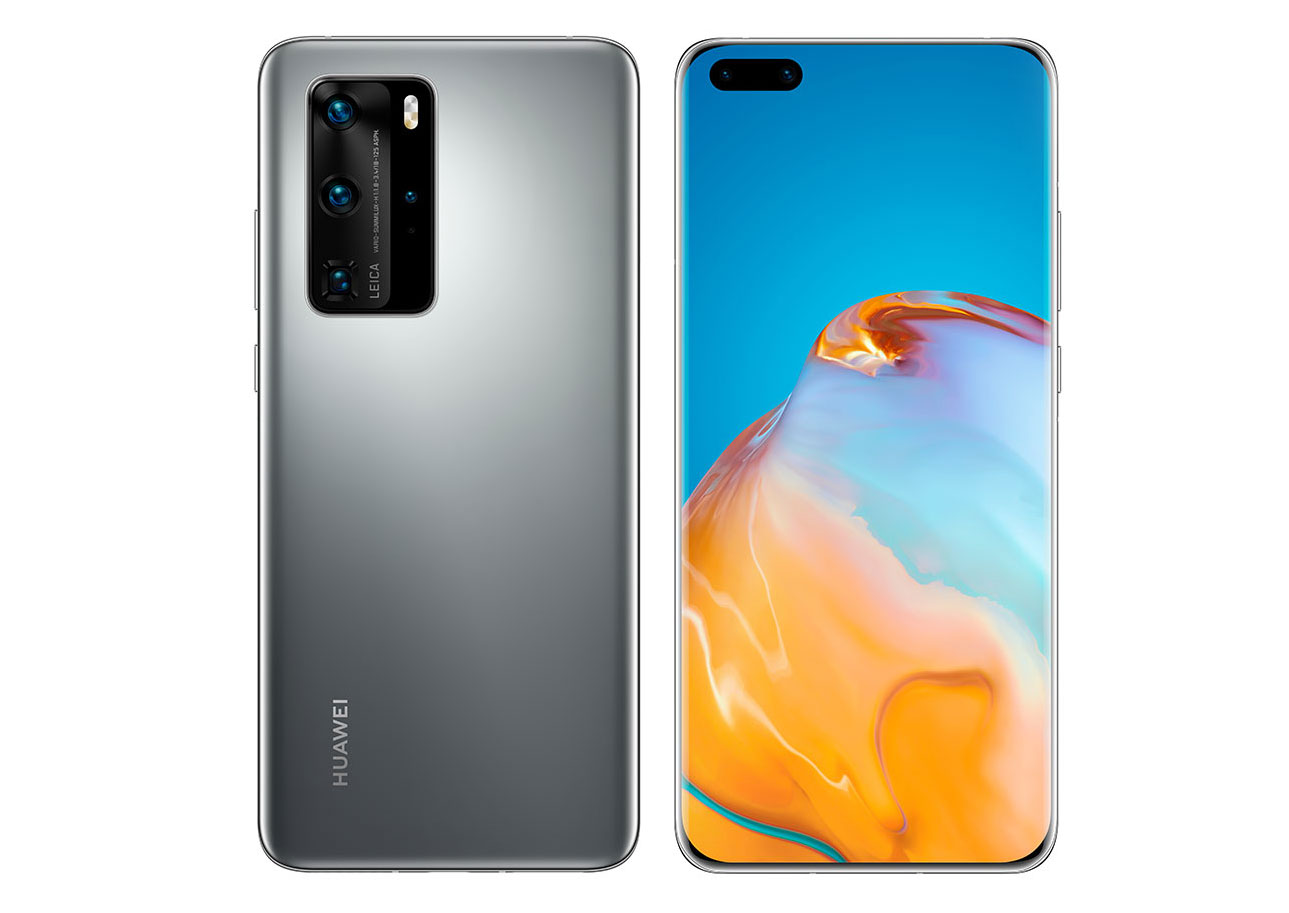 Huawei P40 Pro
Huawei P40 Pro


An overall score of 85 places the Huawei P40 Pro in the upper half of our Display rankings, where it just edges out last year’s Apple iPhone 11 Pro Max at 84, but fails to secure a spot on the podium among all the devices we’ve tested so far. In large measure this is due to its readability performance, with results that are too dark in both indoor and outdoor conditions for truly comfortable viewing. Further, although its readability in very low light and nighttime conditions was adequate, it was still a bit on the dark side; with the blue light filter on, however, it was only marginally better than the Apple iPhone 12 Pro — which is to say, essentially unreadable.
On the other hand, its still-image color performance was good overall. Where it really stood out, however, was for its class-leading achievement in our motion sub-category, where it exhibited excellent control of motion blur; moreover, its video playback was instantaneous. It struggled a bit with touch, however, and it lost points for its obtrusive notch and poor handling of aliasing artifacts (particularly noticeable in our gaming use case).
Let’s take a look at the details.
Analyses and comparisons
The DXOMARK Display overall score of 85 for the Huawei P40 Pro is derived from its scores across six categories: readability, color, video, motion, touch, and artifacts. In this section, we’ll take a closer look at these display quality sub-scores and explain what they mean for the user, and we will compare the Huawei P40 Pro’s performance in several areas against some of its key flagship competitors, the OnePlus 8 Pro, the Samsung Galaxy Note20 Ultra 5G, and the Apple iPhone 12 Pro.

Readability
Huawei P40 Pro
66
76
DXOMARK uses the device’s gallery app to show static (still image) content when measuring the device’s display for brightness, contrast, gamma, and blue light impact, etc.
As you know, the most important aspect of a display is how easily you can read the content in various ambient lighting conditions, and in this respect, the P40 Pro falls short of the best devices in our database, as its display tends to be too dark both indoors and out.
Outdoors, the P40 Pro’s readability is impaired because of a significant lack of luminance. While it is nearly always the case that smartphones have difficulties in bright outdoor lighting conditions, the Huawei device really struggles to keep an acceptable level of contrast, whereas the other phones’ renderings show more detail overall, as you can see in the photo comparison below.

In another example, this time in sunlight, the detail in the darker parts of the P40 Pro image is harder to see (take a good look at the very dark seedbed in the middle of the sunflower).

Indoors, the P40 Pro’s lack of brightness is apparent, particularly when compared to the OnePlus 8 Pro and the Note20 Ultra in the middle; and even though the iPhone 12 Pro image is also dark, it maintains more visible detail than the P40 Pro.

Further, the Huawei P40 Pro is slow to respond to falling light conditions, and instead of doing so smoothly, shows a step toward the end of the transition. And when moving from sunlight into shade, there is a noticeable step as the gamma boost fades in response to the darker ambient conditions.
On the plus side, the P40 Pro has basically good brightness uniformity. Yes, there is a slight non-uniformity in its central area compared to along the sides of the screen, and there is slight horizontal shadow alongside the notch, but overall, the non-uniformities are hard to spot. (You can see an illustration of this in the discussion about uniformity in the Color section further below.)
The P40 Pro’s performance when held at an angle is quite normal, as shown in our chart of objective test results:
However, the overarching problem is that the P40 Pro is too dark to begin with. Again, here is the same array of smartphone images shot on axis in indoor lighting conditions:

Our perceptual tests for brightness vs angle confirm the objective test results. Though all the devices in our comparison lose some luminance when held at a 45° angle, the P40 Pro’s loss of brightness and subsequent impact on readability is very apparent, especially at lower gray levels:

The low luminance combined with the angular loss make the Huawei device barely readable.
All is not negative, however: people who are particularly sensitive to too-bright displays in dark ambient conditions will appreciate the P40 Pro’s luminance in those circumstances — it’s just a bit on the dark side, but still easily readable. (The Note20 Ultra, by contrast, is a tad too bright.)
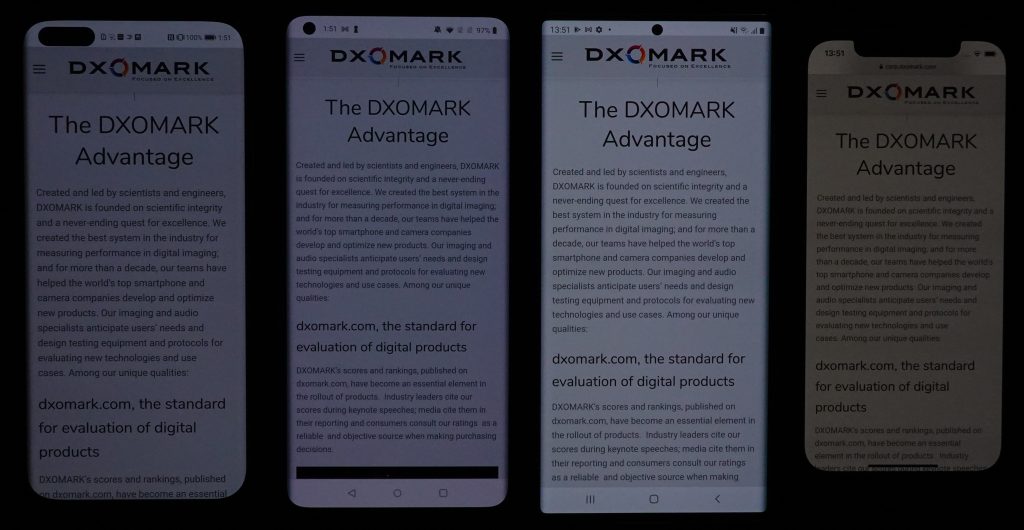
Unfortunately, when the BLF is turned on, the P40 Pro loses brightness and becomes hard to read without effort, though it is easier to see than the iPhone.
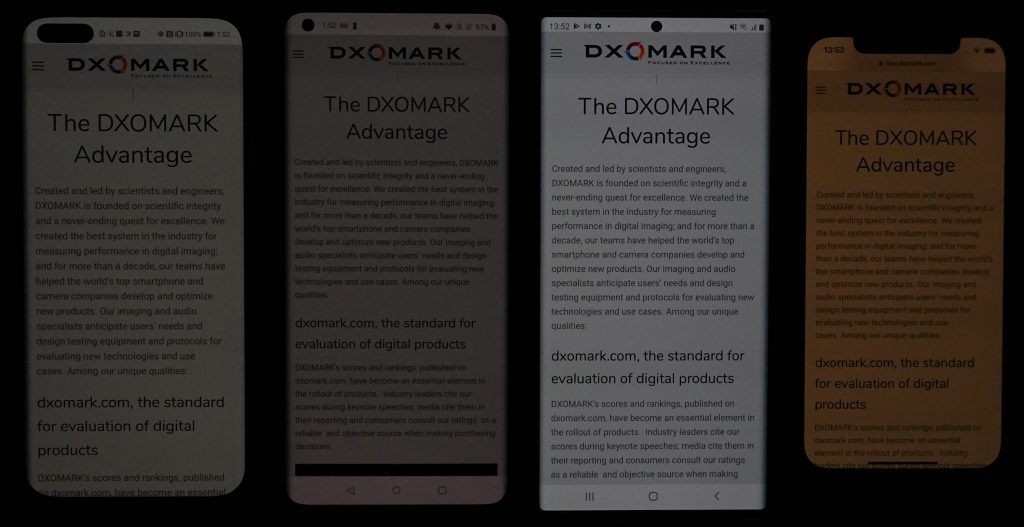

Color
Huawei P40 Pro
83
92
DXOMARK uses the device’s gallery app to show static (still image) content when measuring the device’s display for white point, gamut, uniformity, color fidelity, and blue light filter impact, etc.
Color on the Huawei P40 Pro was a strong point, though its performance remains behind that of the OnePlus 8 Pro, whose score of 88 puts it in first place. Unlike some phones, the device does not correct its white point when the illuminant changes, but this is a minor concern. Of greater concern is that under indoor lighting conditions, a pink cast can be visible, which affects the color rendering in some images (though skin tones appear less impacted). In the photo array below, the P40 Pro’s rendering of the sunflowers is reasonably pleasant, if arguably a bit too saturated for the ambient conditions. (You can see this saturation in the red-orange areas surrounding the dark central seedbed.)

Viewed outdoors, however, the Huawei’s colors are not only darker, but appear somewhat washed out, and a slight green cast becomes visible.

In terms of color fidelity, the charts below show the color tendencies and the direction of the color shift as the P40 Pro tilts when under 1000 lux lighting in both the sRGB (standard) color space (left) and the broader DCI-P3 color space (left). The center of each circle is the target color; anything outside the circle represents a noticeable color difference. The further the tip of the arrow is outside of the circle, the more a user will notice the difference between the color on the display and color of the real object or chart next to it. As you can see, the P40 Pro shows some weaknesses in both color spaces.


The P40 Pro screen is quite uniform overall except right next to its notch, and it shows a very minor purple-green shift as well. The most noticeably non-uniform device is the OnePlus 8 Pro, which not only shows distinct bands emanating from its corner notch, but also shows very pronounced color differences. The Note20 Ultra 5G also has a significant color gradient from its greenish bottom left corner to its reddish top right corner (its much brighter image in the array below makes its non-uniformity a bit hard to see). The best among the group is the iPhone 12 Pro on the far right: it is very uniform except for some darkening on both sides of its notch.
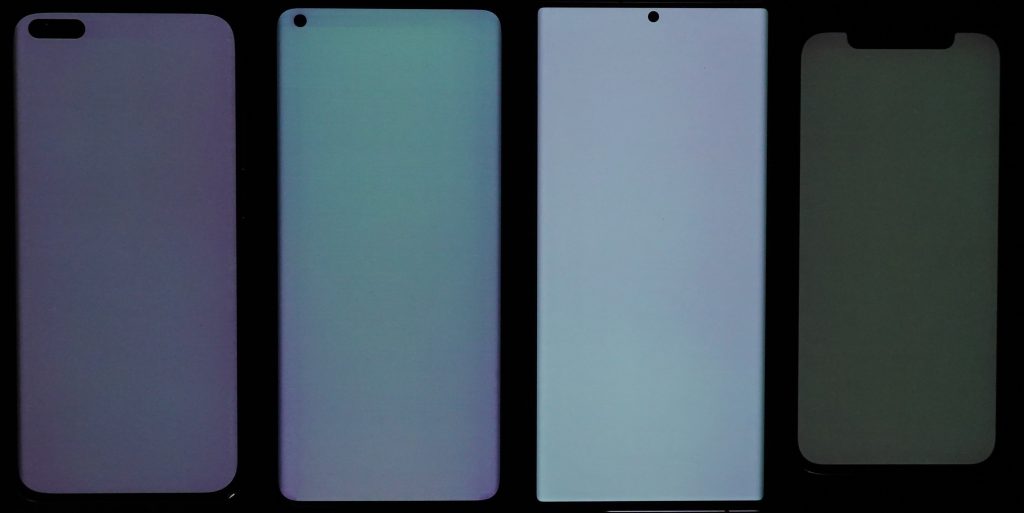
White (color) vs angle
Users sometimes hold their smartphones at an angle, which can affect display color rendering. The left-hand chart below shows the Huawei P40 Pro’s color tendencies when held at an angle; in the right-hand chart (essentially a closeup of the left chart), each dot represents a measurement taken at a discrete angle and distance from the device; dots inside the inner circle exhibit no color shift in angle; those between the inner and outer circle have shifts that are just noticeable by trained experts; but those falling outside the outer circle are noticeable. For the P40 Pro, you can see that as it tilts, it first shifts into pink territory before heading into yellow-green as the angle becomes more acute.
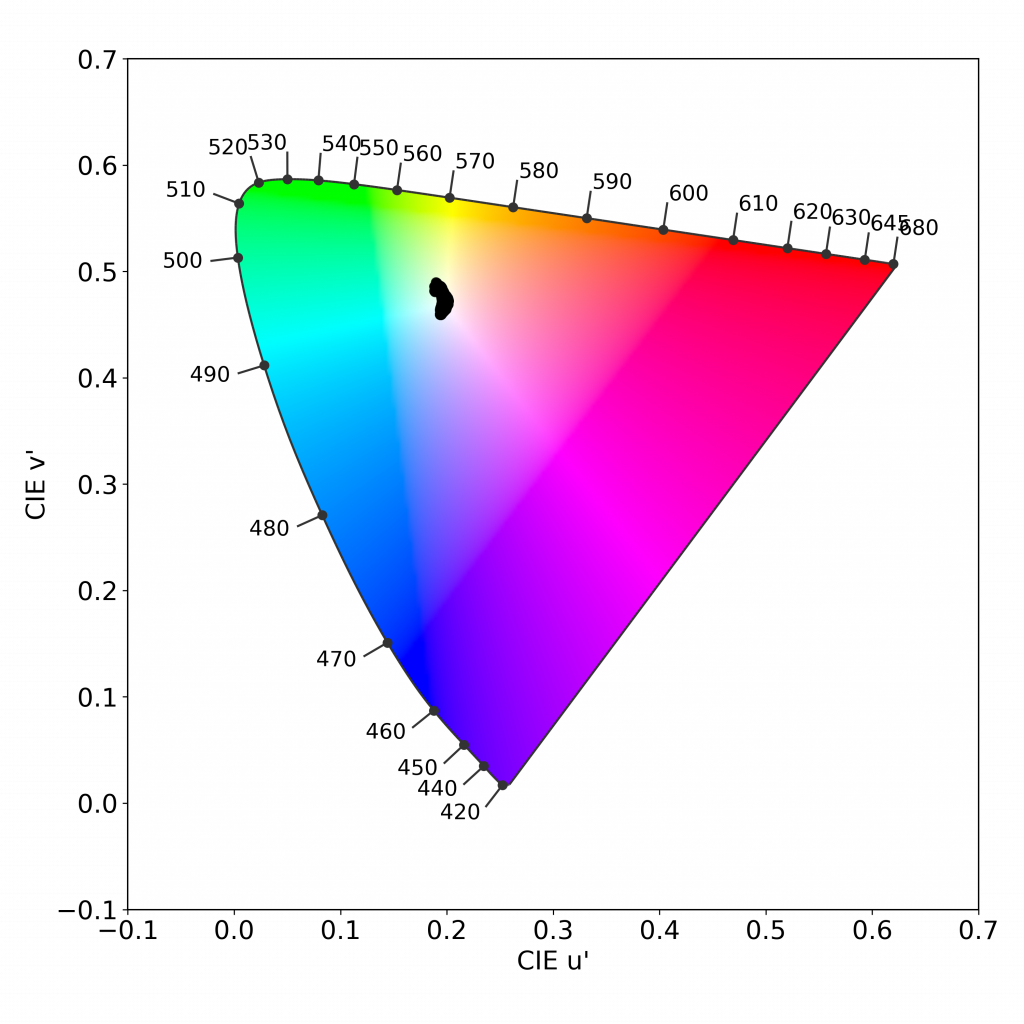
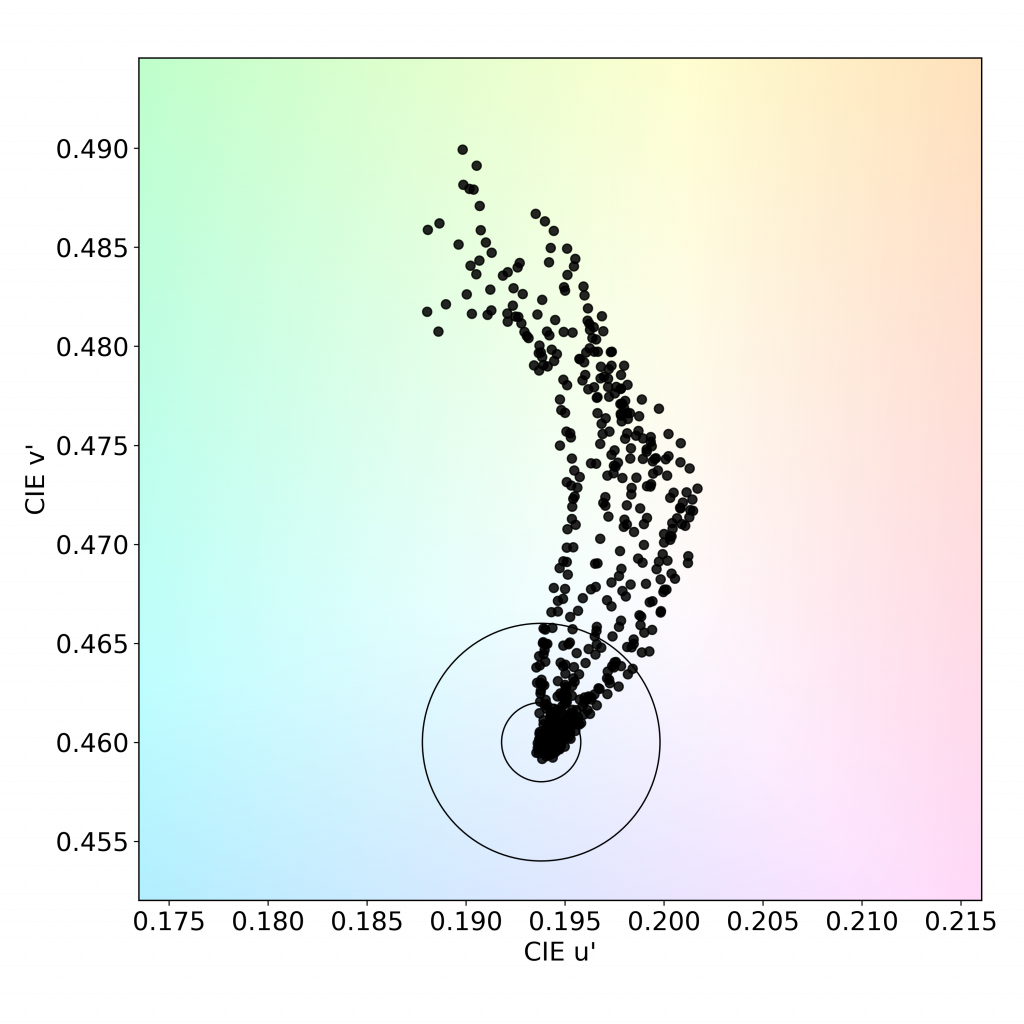
The photos below of our perceptual tests back up the objective measurements. The top set is shot on axis (perpendicular to the viewer); the second set is shot at a 45° angle. On axis, the Huawei device has a very noticeable pink cast:
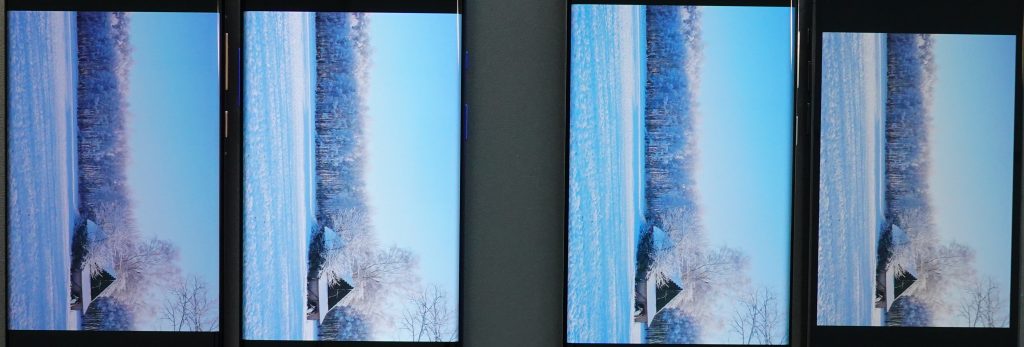
On angle, not only does the P40 Pro lose some brightness, but its pink cast has shifted towards yellow-orange:

Finally, with the blue light filter on, color on the P40 Pro becomes just a bit yellow; while not unpleasant, the shift does nothing to help its readability, which remains too dark overall.


Video
Huawei P40 Pro
61
91
DXOMARK uses the device’s video (or browser) app to show dynamic content when measuring the device’s display for brightness, contrast, gamma, and color.
Video was rather a disappointment on the Huawei P40 Pro, with the main complaint similar to that for readability above — its default brightness setting is simply too low for comfortably watching movies. Further, contrast is low when watching HDR10 content, especially when compared to the iPhone 12 Pro, which is the best among this group. In contrast to the Apple screen grab in which you can see quite a bit of detail not just in the highlights, but also in the dark backgrounds in the comparison below, detail on the P40 Pro goes AWOL in the darkest shades, its highlights are not bright at all, and the overall appearance is dull and lackluster — yet another consequence of its persistently dark rendering.
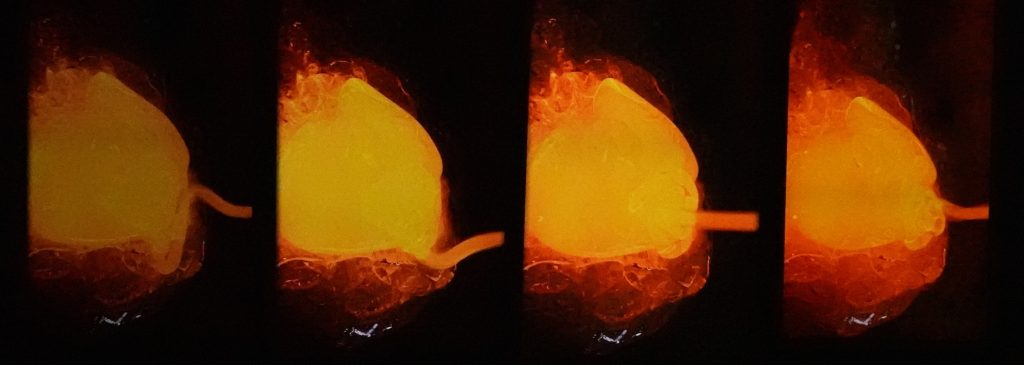
Unsurprisingly, the P40 Pro’s dark rendering also has an impact on video color generally. As you can see in the frame below, its rendering doesn’t come close to the punch and vibrancy of the other phones’ images — though in fairness, the Apple frame on the far right is aversely impacted by a strong yellow cast. (By the way, this same impression of desaturated and dull colors in P40 Pro videos carries over into skin tone rendering as well.)
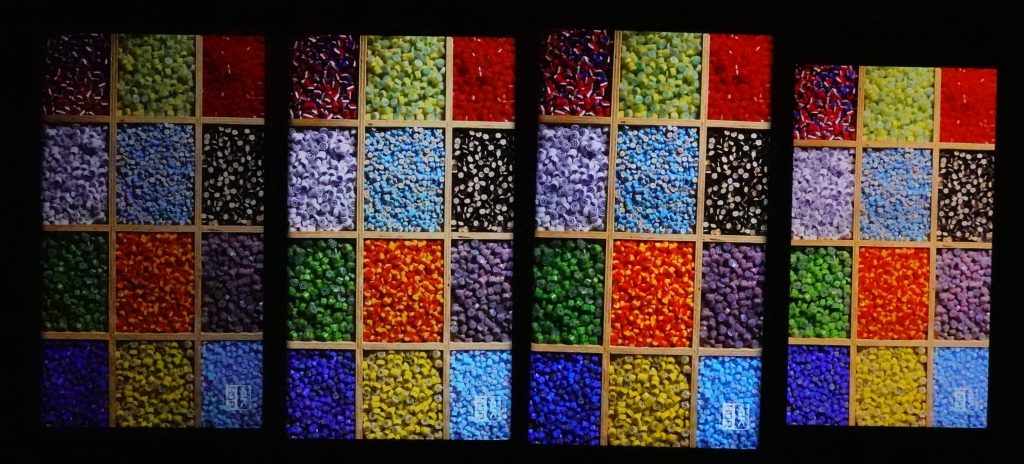
The Huawei P40 Pro’s score for motion is the best among all devices we have tested thus far, showing little to no stuttering at either 30 fps or 60 fps when playing UHD-HDR10 content. As for motion blur, the P40 Pro shows no frame duplications and appears consistently sharp. And in other good news, after you move the forward/rewind slider, videos restart instantaneously — something quite a few other devices (even flagship devices) have trouble with.

Touch
Huawei P40 Pro
67
85
Thanks to its 90 Hz refresh rate, the P40 Pro is accurate when zooming in the gallery app, and it is smooth in the gallery app, when browsing the web, and when gaming. Where it loses points is for accuracy in our gaming scenario, because some areas of the screen — notably the bottom corners— do not detect long touches, which significantly impacts the user experience.

Artifacts
Huawei P40 Pro
79
86
Just like other phones with prominent notches, the P40 Pro lost points for the impact of its notch on the user experience, which our testers found intrusive when watching videos and especially when gaming.
With a refresh rate of 90 Hz, flicker is not a particular problem for the Huawei device. (And although it is out of the scope of our current protocol, and thus not something our engineers tested, it’s worth mentioning that the P40 Pro comes with a no-flicker feature that significantly reduces perceived flicker.)
The Huawei P40 Pro has no problems with either ghost touches or judder; however, it does show significant aliasing in our gaming use case, as you can see in the comparison below between it and the best among the comparison group, the Apple iPhone 12 Pro.

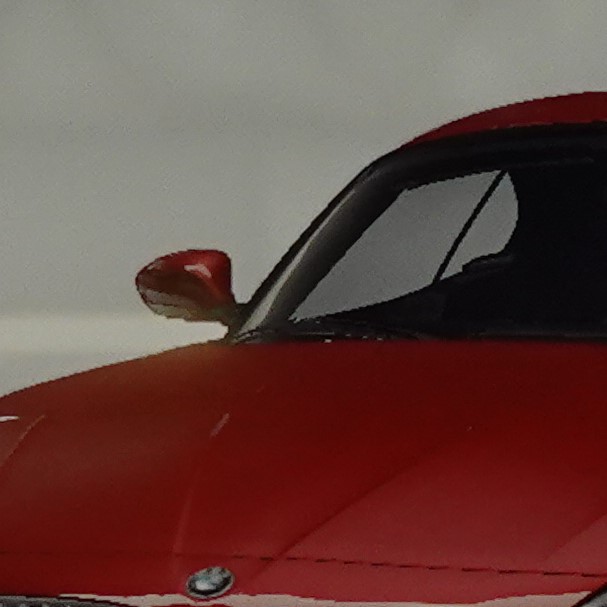
Conclusion
While it has good control of motion and shows acceptable color overall, these strong points may not be enough to compensate for the Huawei P40 Pro’s problems with aliasing, touch accuracy, and smoothness, and especially for its darker than average default brightness settings. This lack of luminance affects display readability both indoors and outdoors, and heavily impacts its video sub-score as well.
Pros
- Color rendering is pleasant and accurate in still images.
- Motion rendering is excellent, in particular frame drop performance and control of motion blur.
- Luminance level is adapted to night reading (except when BLF is on).
Cons
- Brightness levels are low indoors and outdoors, except in low-light conditions.
- Video performance is disappointing, especially brightness level and gamma management.
- Touch accuracy is low on the sides and especially in the bottom corners.
- Aliasing is noticeable when gaming.


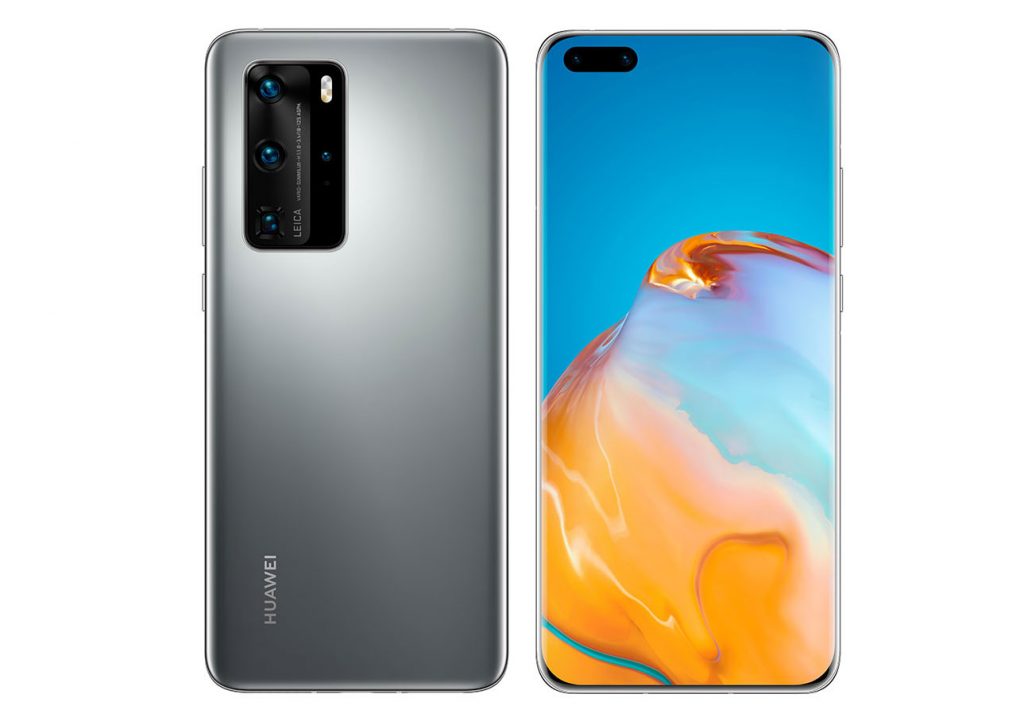



DXOMARK encourages its readers to share comments on the articles. To read or post comments, Disqus cookies are required. Change your Cookies Preferences and read more about our Comment Policy.